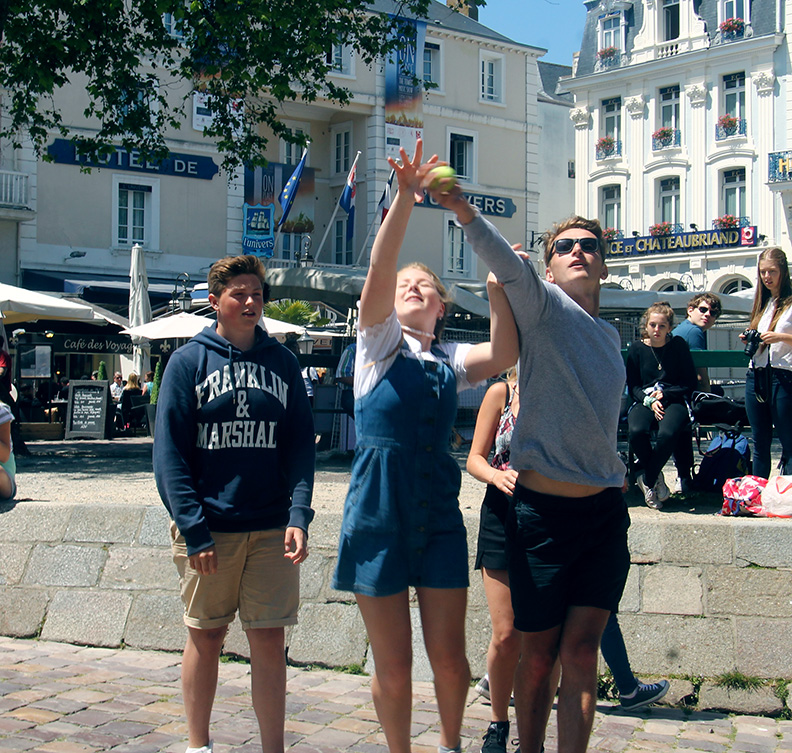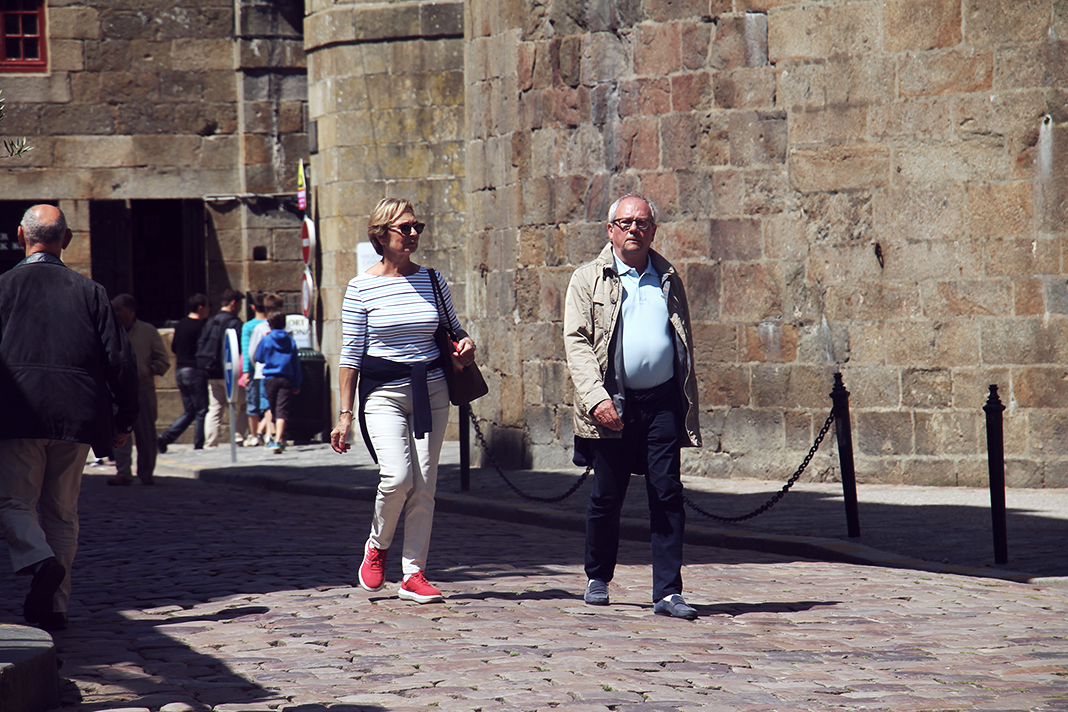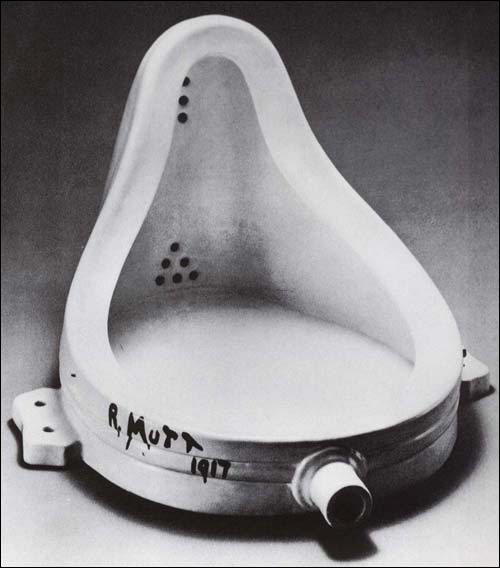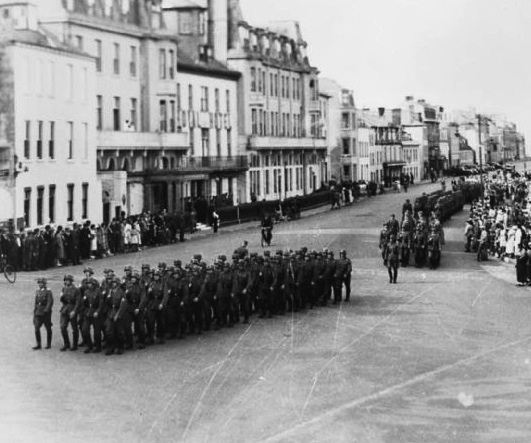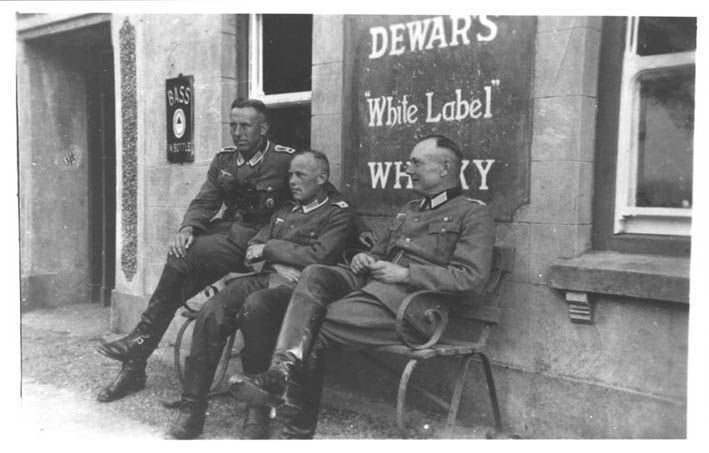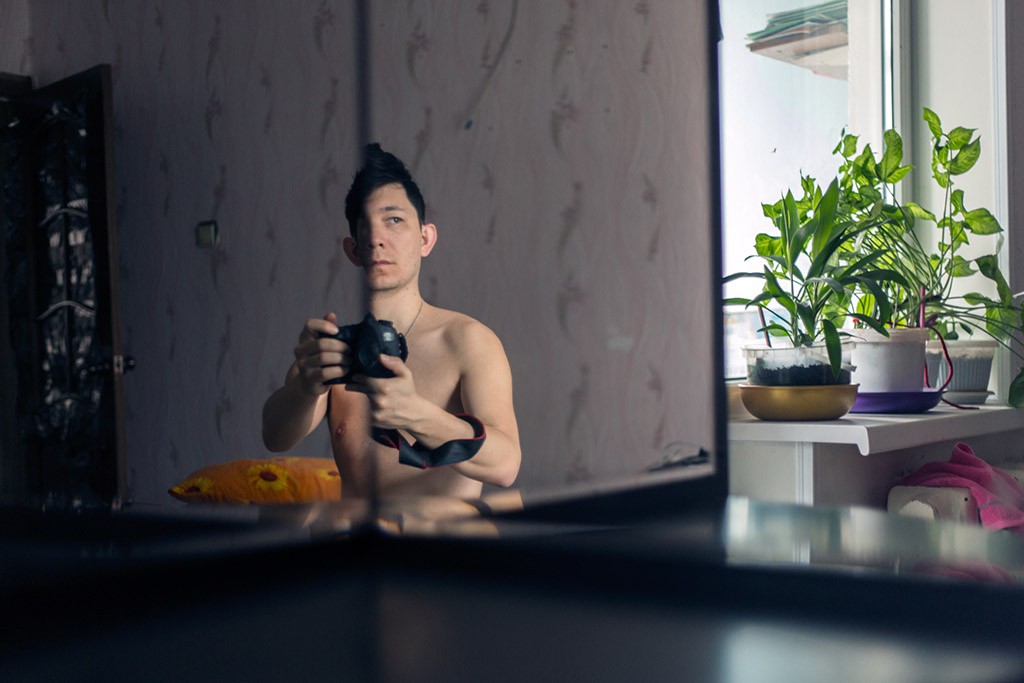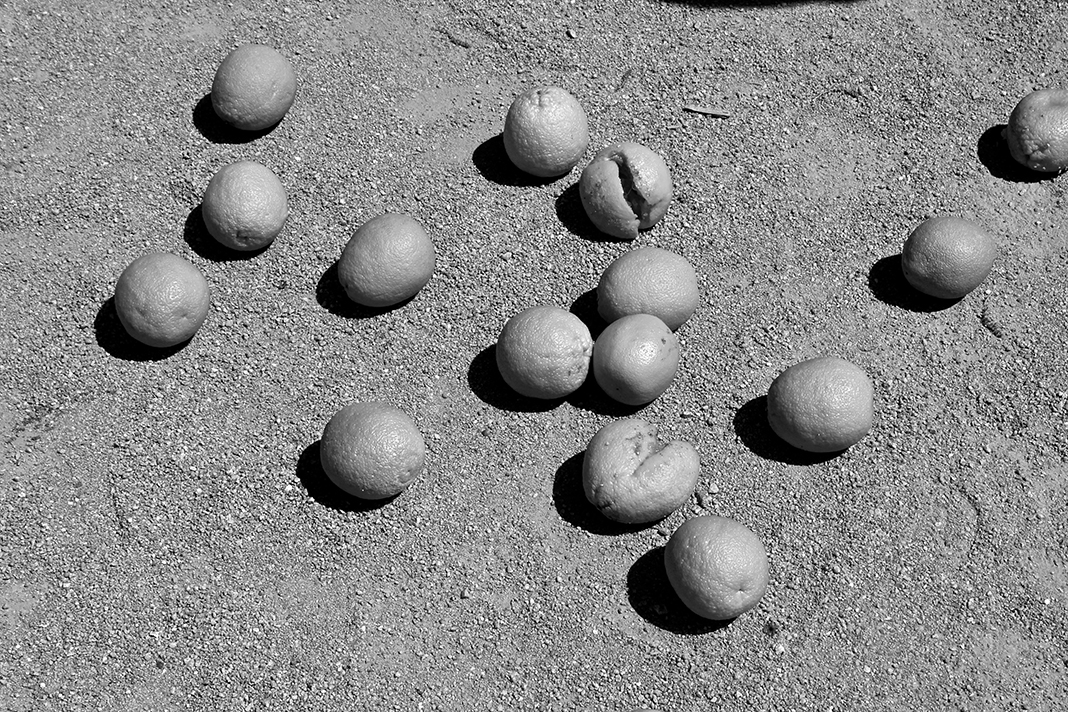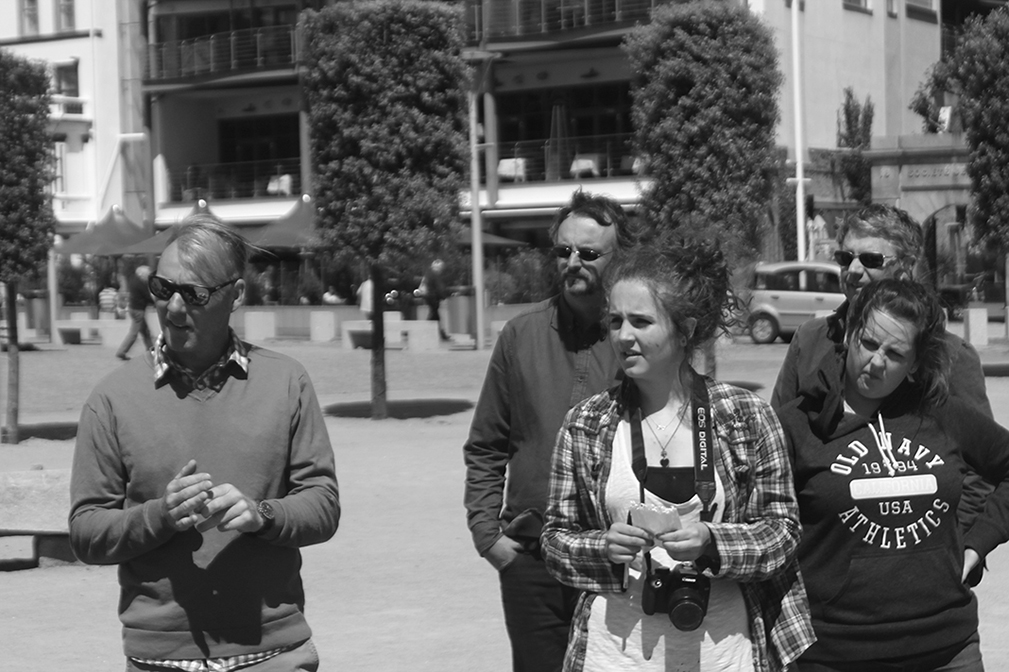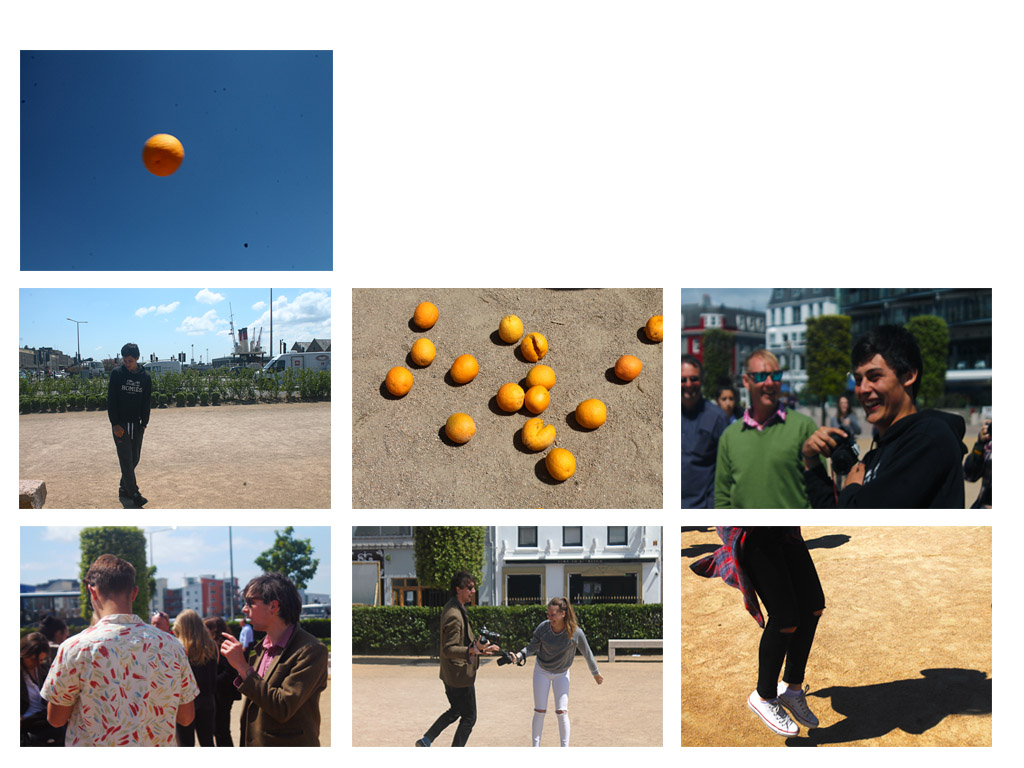My view on Tom Pope’s work
I like Tom Pope’s style of work very much because he is an extremely creative, original and in many cases revolutionary artist whose varied approach to photography and it’s meaning provides a refreshing stance against the more ordinary, formal, and aesthetically conscious stance typically embodied with most traditional art. I am drawn to Tom’s rebellious stance, especially through the way in which he uses this rebellion to observantly challenge society, directing such a meas in a constructive and interesting manner. Tom use of subtly to draw out sophisticated meaning, such as challenging the concept of personal space within society through seemingly minor and lightly disruptive actions which at most can be viewed comically.
During our St Malo trip last Wednesday, I decided to use the influences that I have gained from studying the work of Tom Pope. The themes that I have taken influence from include; subversion, satire and performance photography.
Photo 1
This photograph was taken at lunch time of a few of my friends playing a spontaneous game that involved the participants battling to catch the tennis ball first. I have captured an event involving two people playing the game actively battling for the tennis ball, whilst a third subject stands passively by, observing with apparent fascination, supported by three further intrigued bystanders in the background. This photography relates mainly to the idea of chance because I have captured a specific spontaneous moment which occurred meerly through luck and coincidence.
The meaning that I attempted to explore behind this image is to show how a simple and minor act is capable of nevertheless creating a spectacle of awe and fascination. In this image a single act of two people battling for a tennis ball is witnessed with great fascination. The movement and sense of liveliness displayed with the two performers is juxtaposed dramatically with the sense of calm and stillness from the spectators. This image shows how performance in society act as spectacle’s by which bystanders are almost compelled to witness. Subsequently the nature of this image directly questions the right to anonymity. There was/is absolutely nothing to prevent any individual from not observing that moment, which makes the action of the two performers therefore open directly to scrutiny and judgement.
This image also questions who really gains an accurate account from an experience from an action – the subjective performer who was directly associated with the performer or the objective witness, who experiences a more indirect and whole event? As the photographer of this event I find this concept fascinating because, I objectively witnessed the event whilst subjectively performing at the same time. It is difficult to say whether this image an objective account of my own witnessing to this event, or it it a subjective account to my performance of taking a photo, which is fundamentally unreliable due to the specific nature of my perspective, timing and bias.
Photo 2
In this image I captured the reaction of a member of the public with a performance of a girl from our group occurred (she was wrapped up in bubble-wrap and rolled down a hill!). The subject of this image was an ordinary bystander to the event. The subject recognised the events peculiar nature but did not however react very evidently to the occurrence, simply giving a brief, half-intrigued glance. What is effective about this image is the subtly behind it. The individual has just witnessed and extremely subversive and peculiar event but however the reaction does not directly reflect this. This photograph explores the theme of change
This observation therefore shows how an individuals reaction can in many cases be deceptive, diificult as this example shows to judge the true nature of what caused the reaction. Furthermore this begins to challenge the perspective of the viewer, who would most likely be drawn to perceive the event witnessed by the subject to be simply an ordinary and normal one, which however it certainly was not. This therefore questions the viewers quickness to assume the nature of the photograph, without any provable evidence.
This image relates well to the theme of change because it shows how individuals behaviour will be affected by the nature of the environment. The formality of this setting has caused the subject to give only a subtle response in relation to an unusial situation. This reaction may however have changed should the situation have been more private and open to expression.
This photo is a depiction of the slogan ‘1984’ by George Orwell. I find that this image is very effective because it is visually bold and powerful. There is a sense of conflict (challenge) with this image, due to the fact that a direct point is made to an ambiguous meaning.
The simplistic nature of this image I find works very well because it sends a clear message to the viewer. I have made no attempt to make the writing precise and artistic. I find that this works well because it highlights the spontaneity of the performance, at gives it the protest a realistic feel, literally as if anyone could make a similar protest which challenges society. When making this protest I took influence from Tom Pope’s ‘Weak Anarchy’ series. This protest does not promote any radical political idea but is instead a more subtle means of questioning society and life in general. The lack of specific intention I also find important because it makes the protest quite disorderly, therefore even more subversive.

